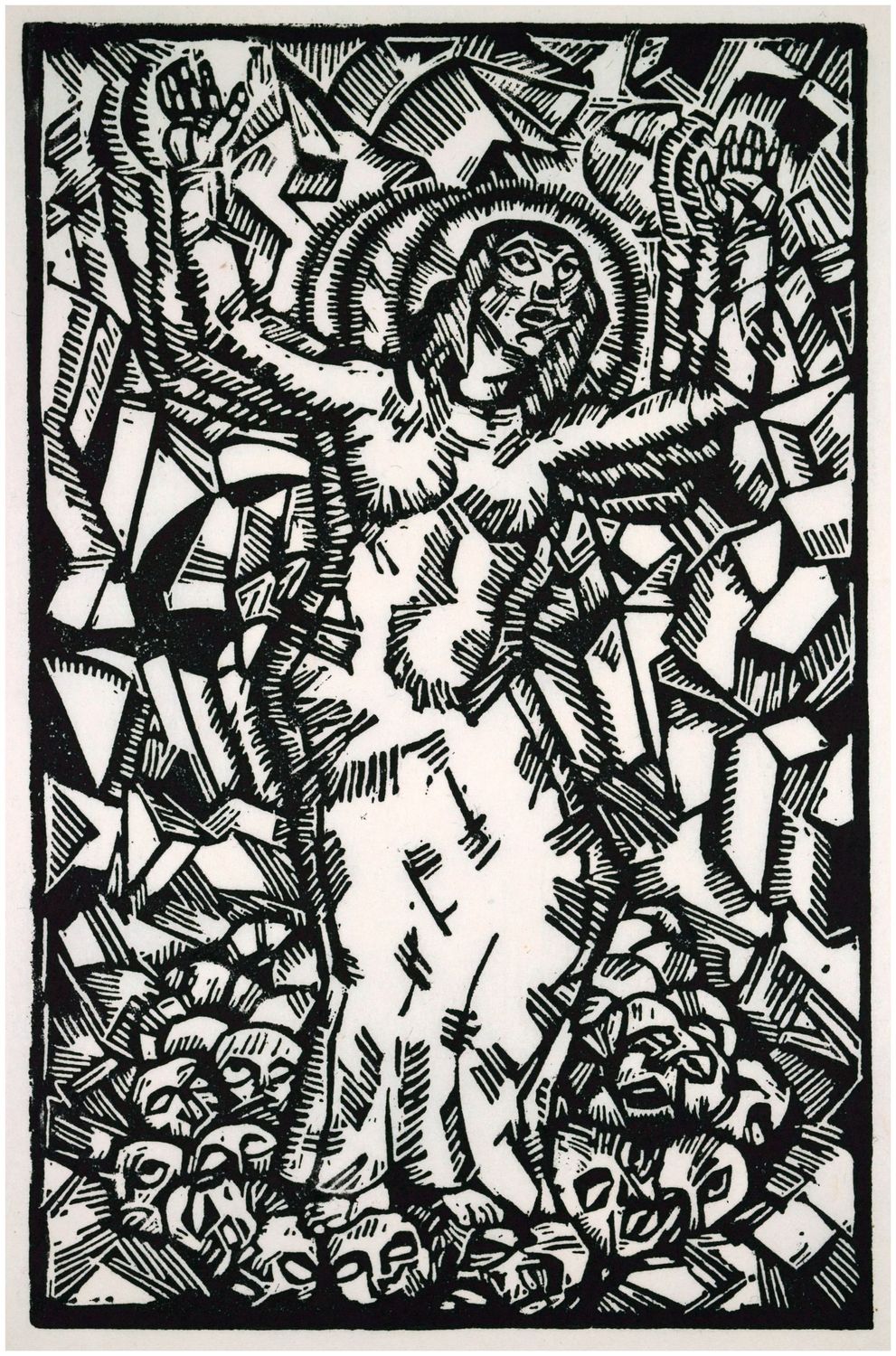Tappert, Georg (1880-1957), The Mother, 1918 (1964)
Georg Tappert(1880 Berlin - 1957 Berlin), The Mother , 1918 (1964). Estate print from 1964. Linocut on Japan, 31.5 cm x 20 cm (image), 44.5 cm x 28 cm (sheet size), marked lower left in lead as copy 6/20, with the estate stamp on the reverse and signed by the artist's wife, Anneliese Tappert.
- minimal waterstain in the upper and lower left margin, otherwise in excellent condition
- Violated Motherhood -
The mother stands on the heads of her dead children with her arms raised in supplication and her eyes fixed on the heavens. They are the countless senseless victims of a war that has desecrated the sanctity of motherhood. In the background, the city dissolves into an expressionistic cascade of horrific events falling from the sky. The arms and halo of the mother appear several times, transforming the mournful lament into movement.
By drawing on the sacred art of the past, Georg Tappert has created a poignant expressionist 'war memorial'.
About the artist
After studying at the Karlsruhe Art Academy from 1900 to 1903 and an interlude at the Burg Saaleck Art School, Georg Tappert returned to Berlin in 1905, where his works were exhibited by Paul Cassirer. From 1906 to 1908, Tappert lived in the Worpswede artists' colony and ran an art school there. His most important student was Wilhelm Morgner, who died during World War I and whose estate Tappert later worked on. In Worpswede he met Paula Modersohn-Becker, whose art inspired him. When Tappert returned to Berlin in 1910, his works were rejected by the Berlin Secession, and he and Max Pechstein founded the New Secession, which lasted until 1914 and included Franz Marc and Wassily Kandinsky, bringing together artists from the Brücke and the Blaue Reiter. In 1911, together with Käthe Kollwitz, he founded the "Juryfreie" exhibition in Berlin, and in 1918 he co-founded the "Novembergruppe" and the "Arbeitsrat für Kunst". In 1921 he was appointed professor at the Königliche Kunstschule. The Nazis removed him from his post in 1937 and in the same year removed many of his works from museums as 'degenerate'. Tappert withdrew into inner emigration, painting mainly landscapes. After the war, he devoted himself to rebuilding the Kunstgewerbeschule, which he merged with the Kunstgewerbeschule under Karl Hofer.

